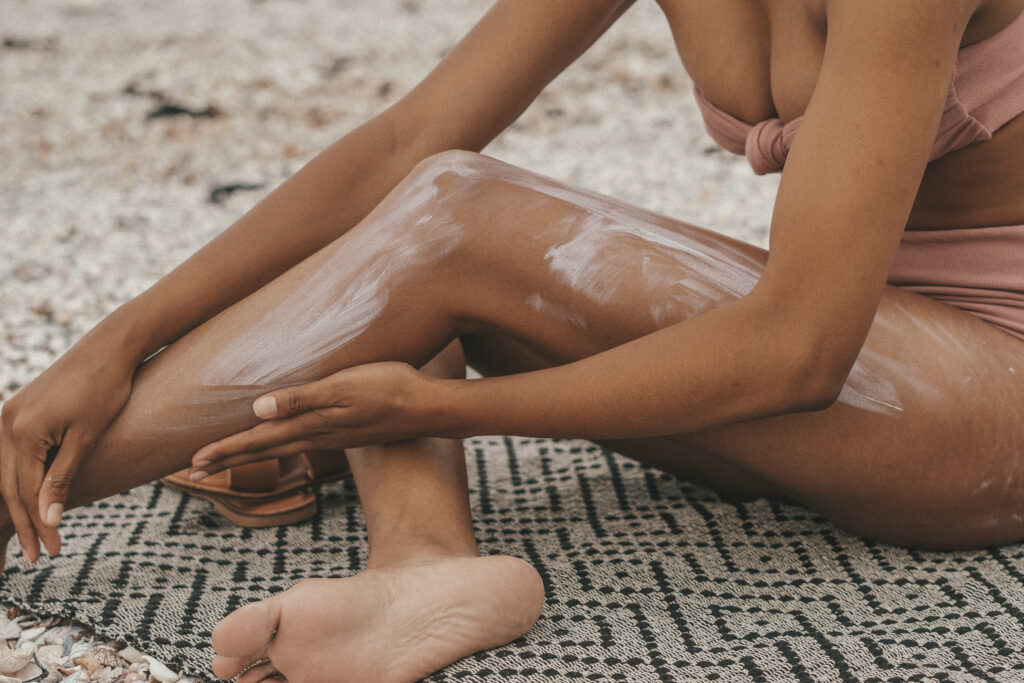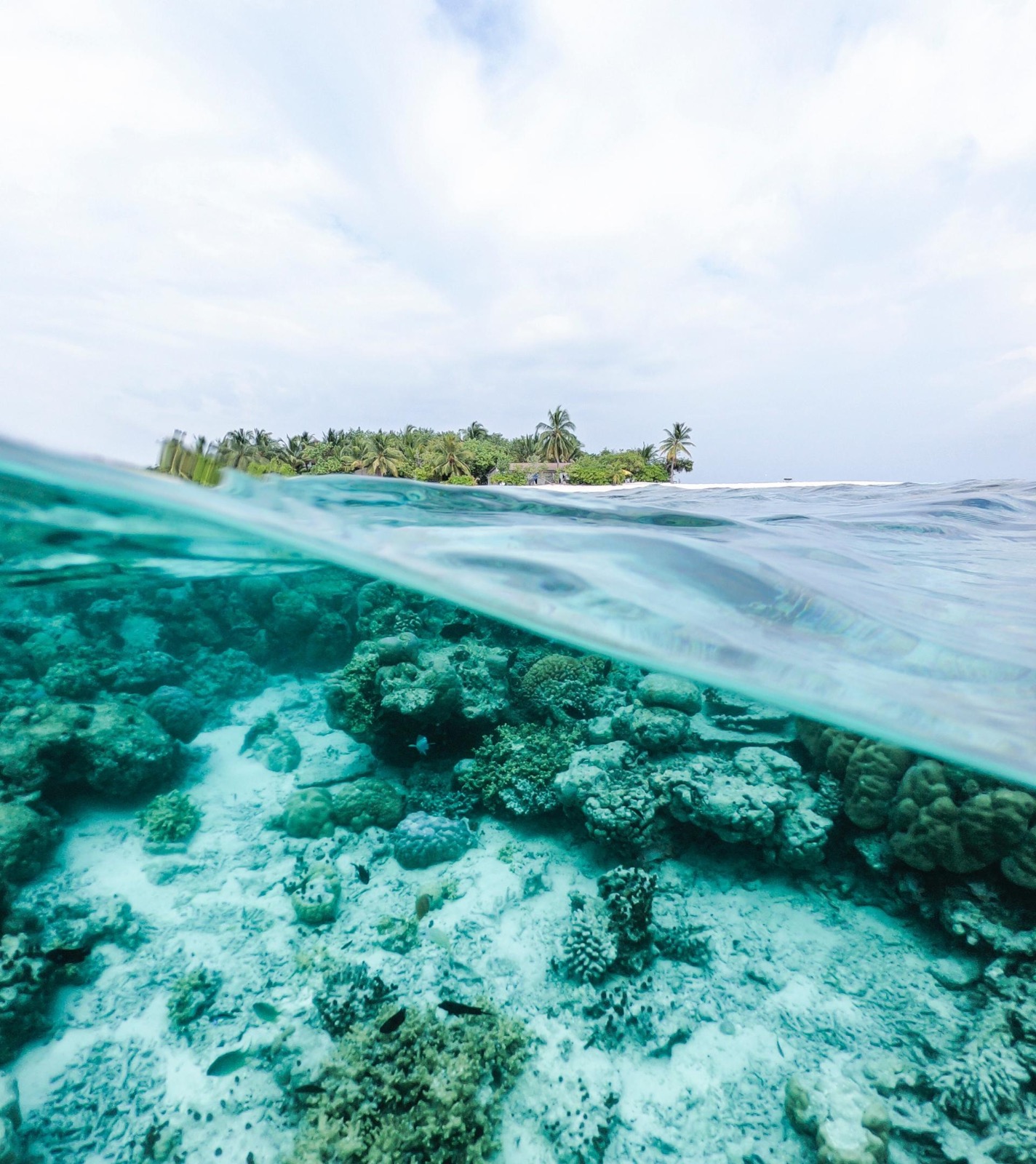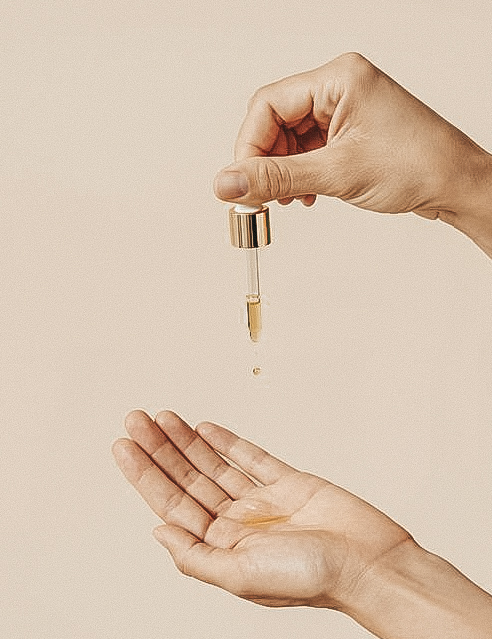One of the most beautiful spectacles that man can observe is the sea and its wonders. So much so that they astound us that, in 2019, the most in vogue Pantone color was Living Coral, dedicated to life below the surface.
Unfortunately, however, this was not pure chance; it was in fact an alarm signal, since coral is an extremely endangered species. One of the most serious threats comes especially from those who go to the beach to enjoy its beauty.
As we have always been told since we were children, sprinkling ourselves with sunscreen is vital to protect our skin, but it is equally essential to preserve the environment; in fact, one of the most harmful agents for the sea and its creatures, oxybenzone or BP-3, is contained in more than 3500 solar products.
A truly alarming news comes from a study by Craig Downs, a marine biologist, who states that sunscreens are one of the primary components for the destruction of the environment of coral reefs in the Caribbean area. You can find evidence of the high risk by observing that in this area a high percentage of BP-3 has been detected in places used for tourism. Unfortunately, this is not the only area affected; the Red Sea is on the same list and it is possible to think that the Indo-Pacific region is also affected by the same problem.
Worrying are also the numbers of the quantity of solar products poured on the coral reefs, which thus affect about 10%; the figures, according to an estimate, fluctuate between 6 and 14 thousand tons every year.

What causes damage to environment
The latest research shows oxybenzone, enzyme, amyloxate and octisalate contained in cosmetic products (especially sun creams) as the main dangerous agents for the marine environment. The same produce the so-called phenomenon of biomagnification; it is an accumulation of these substances in corals, molluscs, algae, crustaceans and sea urchins, which, as a direct consequence, also affects other organisms further up the food chain.
Another great enemy is represented by microplastics, specifically for sunscreens the problem is bacteria, which can imprison or suffocate the small organisms that deal with the disposal of toxic substances in the sea.
The effects of sun creams on environment
A study published in the journal Archives of Environmental Contamination and Toxicology in 2016 shows how the harmful substances in sun creams damage the reproduction and growth of corals and lead them to bleaching. Specifically, oxybenzone acts on the planulae; these are small planktonic larvae, which will originate the real coral. Their DNA and their endocrine system are compromised, triggering results such as the birth of deformed planulae that remain prisoners of the exoskeleton and cannot give birth to a new colony.
A negligible amount such as 62 parts per trillion oxybenzone is enough to cause enormous damage. In short words? A drop in six Olympic-sized swimming pools.
As indeed Craig Downs himself has told; “Although pollution is one of the main causes of coral degradation and is the easiest factor to control, oxybenzone as a cause has been largely ignored.” Its traces can, unfortunately, help the proliferation of viral infections in corals and lead to “zombie reefs”, a coral that is healthy to the eye but is sterile and dead.
No less relevant is the fact that oxybenzone reacts with chlorine to generate harmful by-products, which accumulate in wastewater treatment plants. In humans this can cause allergic reactions from photo-contact and contact.

Solutions
Important actions have been taken to solve and contain the problem; in 2018 the president of Palau, Tommy E. Remengesau Jr, signed the Responsible Tourism Education Act. This act, among the most significant commitments, bans sunscreens harmful to the coral reef, no longer available in the federal state of the Pacific; ecological alternatives have been introduced to replace them, as well as recyclable solutions to plastic or polystyrene tools have been proposed. In addition, severe disciplinary measures have been taken for those who enter Palau with unauthorized creams; immediate confiscation of products and penalties of up to $ 1,000. Speaking to Parliament, Remengesau thus justified the measures; “The power to confiscate sunscreens should be enough to discourage their non-commercial use, and these provisions strike a clever balance between educating tourists and their fear.”
There were further statements from the president’s office, noting that “The chemicals found in most sunscreens are toxic to corals, even in minimal doses. Generally, Palau’s dive sites are home to around four boats per hour full of tourists, which has led to concerns about a buildup of chemicals that could see the reefs reach the point of no return. On any given day, it is equivalent to liters of sunscreen that end up in the ocean at the most famous diving spots and snorkeling spots in Palau. We are just seeing what we can do to prevent pollution from entering the environment “.
Furthermore, the biologist Downs strongly supports the idea of other countries to follow Palau; “It is the first country to ban these chemicals from tourism, I think it’s great, that they are proactive. They don’t want to be like Thailand, the Philippines and Indonesia, where they had to close the beaches because the coral reefs around those beaches have died. There are numerous scientific articles indicating a link between sunscreen chemicals and reef degradation. What we are saying is that where there are many tourists entering the water, the pollution from sun protection can have a detrimental effect on nearby coral reefs, up to 5 kilometers away. “
However, other solutions are possible, in addition to legislative ones; cosmetic companies, in fact, have started to create new formulas, both for oils and for sun creams, in order to make them eco-sustainable; the focus was also applied to packaging and biodegradable, organic and natural ingredients. Some examples are new brands such as MyKai, born from a collaboration between Unilever and Bio-on with the aim of producing Ocean Friendly cosmetics. The cosmetic line was introduced on the market with a first, innovative proposal of eco-sustainable solar products, free from microplastics to which is added a filter, present in the formula, based on 100% mineral filters and an increase in the Spf (Sun Protection Factor). This peculiarity is the result of Bio-on’s patented technology in the universe of biopolymers, all 100% natural, biocompatible, biodegradable, with the guarantee of the Cosmos and Natrue and GMO free certificate.

Other brands such as Comfort Zone (from Davines group) have created sun creams for both face and body using new latest generation Uva / Uvb filters. Again, Avène reorganized the structure of his formulas to use only four sunscreens; this also contributed to improving the biodegradability of the solution itself.
Biotherm has instead opted for the creation of a 99% biodegradable solution as a base and a 95% biodegradable fragrance with its Waterlove Sun Mist proposal. Brands such as La Roche Posay have created organic filters that avoid the compromise of photosynthesis of micro-algae and do not cause the corals to bleach. Finally, Nivea preferred to opt for a product concentrated on natural ingredients such as organic sunflower and avocado oil and free of ingredients such as oxybenzone.
Choosing organic and eco-sustainable cosmetics, which do not contain oxybenzone, enzacamene, amyloxate and octisalate, and therefore have a reduced impact on the environment, allows you to limit damage without sacrificing your own protection and is certainly an important first step to play your part in this struggle for the salvation of the sea. In particular, we must always read the INCI on the packaging and avoid, in particular, the ingredients mentioned above. The most important factor for this cosmetics is the choice of raw materials for the different products and the care of the packaging thanks to the attention to recyclability, to which we must always pay special attention.





